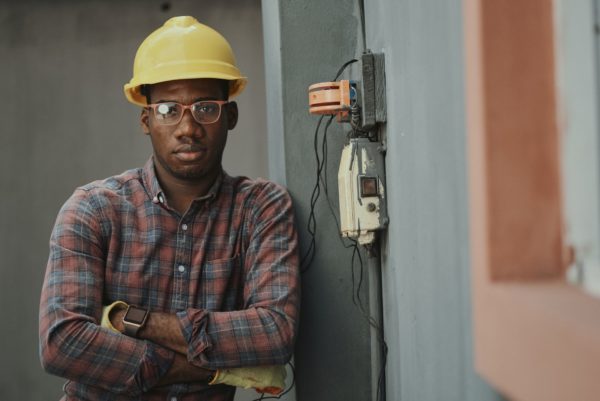By Prashant Gopal
Homes are selling fast in the hottest U.S. market. They just take forever to build.
Just ask Chris Dodd, a sales agent for Scott Felder Homes north of Austin, Texas. He began 2021 by greeting buyers camped outside for a chance to sign a sales contract. Now, he’s fielding their complaints about construction delays that nobody can control.

Building times, extended by supply-chain snarls and labor scarcity, went from 10 months to a year-plus and counting. Customers have been forced to wait it out in a crowded market for rentals. Meanwhile, prices keep rising, with one model home listed for $850,000, up $300,000 since January.
Austin is at the center of America’s great migration, with transplants flooding the market for high-paying jobs, an easygoing lifestyle and housing that until recent years was cheaper than most coastal cities. That’s sparking the biggest homebuilding boom in Texas history — but the wheels of production are grinding to a halt as supply shortages, inflation and a tight labor market converge.“They’re like, ‘why didn’t something happen on my house,” Dodd said of his company’s buyers. “But the stress of trying to find labor, I mean it’s every day of what’s going wrong.”It’s a chain reaction of disappointment. Tile and cabinet suppliers are facing worker shortages of their own and they’re transported by trucking companies that can’t find enough drivers. Homes are closing without microwaves, but windows, an absolute necessity, have an ETA of “no clue,” Dodd said.
The same scenario is playing out from Phoenix to Charlotte, North Carolina, at a time home prices are already rising by record levels. D.R. Horton Inc., the biggest U.S. builder by volume, told analysts in November that houses are selling as soon as they’re completed. But it’s taking seven weeks longer, on average, to finish them.
Those types of delays do little to help a U.S. housing market that has been plagued by tight inventory, pushing prices out of reach for many Americans. Builders are now raising them even further just to maintain margins. The risk for the industry is that one day they’ll push them too high and demand will suddenly dry up, said Jerry Howard, chief executive officer of the National Association of Home Builders.
“The lack of labor, the inflation of materials — it’s a recipe for disaster,” Howard said.
Austin’s supercharged economy only encourages aggressive growth for builders, adding competition for construction resources also needed for new apartment buildings, roads and corporate expansions.
This year alone, more than 150 companies have announced plans that would add more than 20,000 additional jobs to the region, according to the Greater Austin Chamber of Commerce. Elon Musk, the world’s richest person, is adding to the boom with Tesla Inc.’s Gigafactory southeast of the city, not to mention the relocation of the company’s headquarters from Silicon Valley. Just last week, Samsung Electronics Co. said it will build a $17 billion chip plant in Taylor, about 30 miles north of the capital.
New houses are sprouting in all directions, pushing deep into Texas hill country and forcing rural school districts to prepare for unprecedented growth. Austin led home-price gains among major metro areas in the three months through October, with the median price for an existing residence surging 29% from a year earlier to $462,000, according to Redfin Corp. At the same time, affordability relative to local incomes declined by the most in the U.S., according to real estate technology company, OJO Labs.
“We’re calling this the high-risk, high-reward part of the cycle — this is the time you can make a lot of money,” said John Burns, a building-industry consultant based in Irvine, California. “The risk if you’re a homebuilder buying land is that if the market turns you’re stuck with it.”
On a November morning, Zach Wright, Austin area manager for CastleRock Communities, visited his company’s Paramount subdivision in Kyle, about 20 miles south of Austin, to survey the slow-moving progress. He parked his pickup just inside the entrance, not far from hay stacks, horses and farm-fresh eggs sold on the honor system from a front-porch refrigerator.
While Kyle is known as the pie capital of Texas, relative affordability is the biggest draw. Even the town sign just outside the one-block downtown is shaped like a house, flanked on each side by homebuilder billboards.
CastleRock considers itself the “every family” builder, with homes starting at $325,000 in the Austin area, where it has about 550 houses under construction. None are available to sell. Like many builders, the company stopped taking orders after lumber prices spiked earlier this year and labor delays began mounting. Now homes aren’t sold until the inside walls are in place — known as the “sheet rock” stage.
Wright, a Texan with a long red beard and wide smile, walked past the Paramount sales office to a row of two-story houses, newly wrapped with waterproofing, pointing at one that just got windows after a three- or four-month delay. He said his supplier allocates him only five window packages per week, a fraction of what he needs.
Slabs of concrete sit for months while he coordinates materials and work crews who don’t necessarily arrive at the same time. CastleRock has almost doubled what it pays framing crews in the past year, now up to $7 for every square foot completed. Wright goes on recruiting missions to competitors’ construction sites, handing out business cards to contractors.
“We’re cutting into margins to keep the job moving,” Wright said.
Russ Adcock, the director of purchasing for fellow builder GFO Home, is paying even more, as much as $9 a square foot, he said. And he avoids putting two contractors in the same neighborhood because that’s a recipe for poaching, he said.
“Whoever’s paying the highest is going to get the labor and whoever has the labor is going to get the work,” Adcock said, sitting under the gabled living room ceiling of a model home at the company’s North Haven community. The house now has a stone facade because of problems in getting bricks.
The pay hikes are a boon to people like Jessica Rojas, a plumber apprentice who is making $17 an hour for a contractor, working alongside her husband on a crew. She was the first woman hired and the company has been recruiting the wives and sisters of workers to keep up with demand.
Rojas quit her previous job in childcare to make more money, but she can still barely afford Austin any more. She lives in a mobile home with her husband and two children, and the rent for the land is soaring. The couple has been trying to buy a home, recently bidding $50,000 over asking for a house listed for $290,000. A buyer from California with cash paid $100,000 over and won, said Rojas, who’s now giving up the search.
“Now that I’m working double and making double or triple the income, I’m at the same stage,” Rojas said.
But out-of-state buyers have their own frustrations. Realtor Jeremy Knight, who has a “Moving to Austin Texas Guide” YouTube channel with 10,000 subscribers, knows that too well.
On a recent Wednesday, he was driving his Tesla along the main corridor of growth north of Austin, stopping along the way to meet sales agents before heading home to tape his video podcast. In the backseat was his 20-year-old videographer, Jaden Mejia, dressed in a vintage Star Wars T-shirt and corduroy overalls, shooting b-roll.
Mejia, like many of Knight’s clients, moved from Southern California with his parents, both working in the tech industry. Their new house was completed in late summer, just before the construction problems became widespread.
One of Knight’s customers is ready to close on his house, but his cabinets haven’t arrived. Another buyer’s closing was pushed out until March after a shipment of windows was stolen the day it arrived on the job site.
The client is upset but is being careful not to push the builder too hard because prices have gone up more than $100,000 since he signed his contract, Knight said.
“2020 was great, believe it or not, with the pandemic,” Knight said. “2021 has been a nightmare.”
(Updates with detail on affordability. A previous version of this story corrected the note on the chart.)
More stories like this are available on bloomberg.com.




